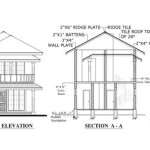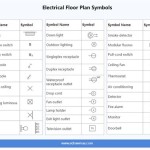Essential Aspects of Home Plans For Additions
Enhancing your home with an addition is a significant investment that requires careful planning. Whether you're adding a new bedroom, expanding your living area, or creating an in-law suite, understanding the essential aspects of home plans for additions will ensure a successful outcome.
1. Define Your Needs and Goals
Before creating a plan, it's crucial to define your needs and goals. Consider the purpose of the addition, the size, layout, and features you desire. Determine how the addition will integrate with the existing structure and whether it will require additional infrastructure, such as plumbing or electrical.
2. Choose a Design Style
The design style of the addition should complement the existing home. Decide on the architectural features, materials, and finishes that will blend seamlessly with your current design. Consider the exterior appearance, roofline, and windows to ensure a cohesive look.
3. Determine Space Allocation
Properly allocate space based on the intended use of the addition. Consider the flow between the existing home and the new space. Plan for adequate circulation areas, storage, and natural light. Utilize floor plans to visualize the layout and ensure functionality.
4. Consider Structural Integrity
The structural integrity of your home is paramount. Engage a qualified architect or engineer to assess the existing structure and design the addition to meet building codes and ensure stability. Proper foundation, framing, and roofing systems are essential for a safe and durable addition.
5. Optimize Energy Efficiency
Incorporate energy-efficient features into your plan. Choose insulated walls and ceilings, energy-saving appliances, and high-performance windows. Consider solar panels or geothermal systems to reduce energy consumption and increase sustainability.
6. Address Accessibility
Ensure the addition is accessible to all users. Plan for wide doorways, accessible bathrooms, and ramps or elevators if necessary. Consider universal design principles to create an inclusive space that accommodates individuals with diverse abilities.
7. Seek Professional Help
Collaborating with experienced professionals is essential for a successful home addition. Architects, engineers, and contractors can provide valuable guidance and expertise during the planning, design, and construction phases. Their knowledge and experience will help avoid costly mistakes and ensure a high-quality outcome.
8. Obtain Permits and Approvals
Before starting construction, secure the necessary building permits and approvals. Contact your local building department to determine the required permits and submit your plans for review. This step ensures compliance with building codes and regulations.
9. Create a Detailed Contract
A detailed contract with the contractor is essential. Outline the scope of work, materials to be used, project timeline, and payment schedule. This agreement protects both parties and establishes clear expectations.
10. Monitor the Construction Process
Regularly monitor the construction process to ensure it aligns with the plans and specifications. Communicate with the contractor, inspect the work, and address any concerns promptly. This proactive approach helps ensure the addition meets your expectations and avoids potential delays or issues.
By carefully considering these essential aspects, you can create a well-thought-out home plan for additions that enhances your living space, adds value to your home, and provides years of enjoyment.

Important Considerations When Building A Home Addition The House Designers

Additions Finish Werks

A Sweet Master Suite Addition

Independent Living Home Addition Building Plans Plan 1

Inspiring Affordable Home Additions The House Designers

Add A Second Floor Cap04 5179 The House Designers

New Master Suite Brb09 5175 The House Designers

Sample Master Suite Renovation Pegasus Design To Build

Inspiring Affordable Home Additions The House Designers

Building An Addition To Your Ranch Style House Colony Home Improvement
Related Posts








